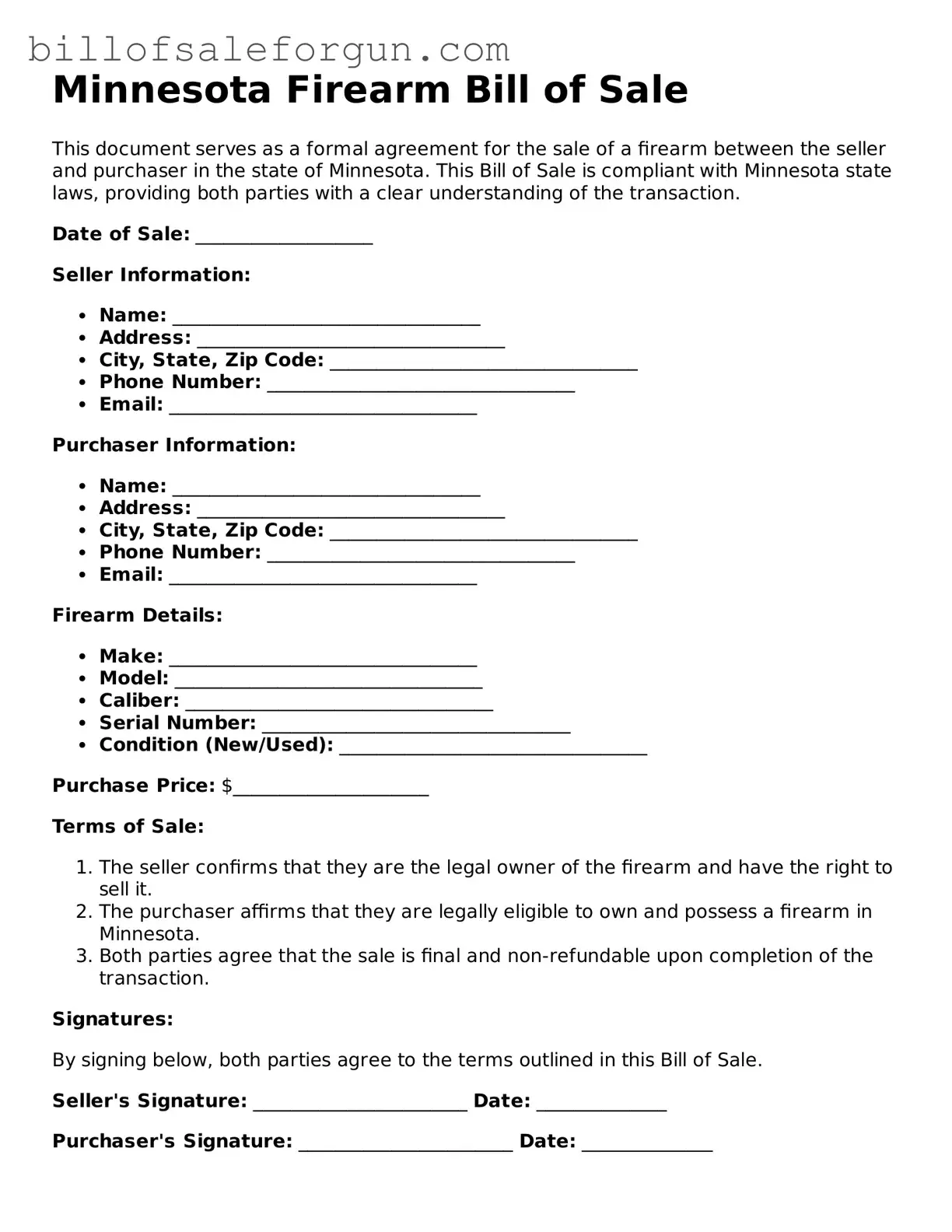Similar forms
The Minnesota Firearm Bill of Sale form shares similarities with a Vehicle Bill of Sale. Both documents serve as proof of transfer of ownership from one party to another. They typically include details such as the buyer and seller's names, addresses, and signatures, along with descriptions of the item being sold. Just as a Vehicle Bill of Sale may outline the make, model, and VIN of a car, the Firearm Bill of Sale specifies the make, model, and serial number of the firearm. This ensures clarity and legal protection for both parties involved in the transaction.
Another document akin to the Firearm Bill of Sale is the Personal Property Bill of Sale. This form is used for the sale of various personal items, including furniture, electronics, and collectibles. Like the Firearm Bill of Sale, it provides essential information about the item, such as its condition and any warranties. Both documents aim to formalize the transaction and protect the interests of the buyer and seller, ensuring that both parties have a clear understanding of what is being exchanged.
In addition to the various bills of sale previously mentioned, individuals may also find utility in the TopTemplates.info for resources related to required forms and applications like the DL 44 form, which is crucial for navigating the regulatory landscape of obtaining or renewing driving permits and identification in California.
The Real Estate Purchase Agreement also bears resemblance to the Firearm Bill of Sale in its role as a legal contract. While the former pertains to real property, both documents require detailed information about the parties involved and the items being transferred. They typically include clauses that outline the terms of the sale, such as payment methods and timelines. This ensures that both parties are aware of their rights and obligations throughout the transaction process.
A Lease Agreement is another document that shares characteristics with the Firearm Bill of Sale. While a lease pertains to the rental of property rather than a sale, both documents establish terms and conditions for the use of an item. They both require signatures from both parties, ensuring mutual consent. Just as the Firearm Bill of Sale confirms the transfer of ownership, a Lease Agreement confirms the terms under which the property can be used, protecting the interests of both the lessor and lessee.
The Equipment Bill of Sale is similar to the Firearm Bill of Sale in that it is used to document the sale of specific items, often used in business transactions. This document includes details about the equipment, such as serial numbers and condition, much like the firearm details in the Firearm Bill of Sale. Both documents serve to provide a record of the transaction and protect the rights of the buyer and seller by clearly outlining what is being sold and any conditions that may apply.
Lastly, the Boat Bill of Sale shares similarities with the Firearm Bill of Sale. Both documents serve to transfer ownership of a specific item and require detailed descriptions to avoid misunderstandings. They also protect both parties by ensuring that the transaction is documented. Just as the Firearm Bill of Sale details the firearm's specifications, the Boat Bill of Sale includes information about the boat, such as its hull identification number and registration details, providing a clear record of the sale.
